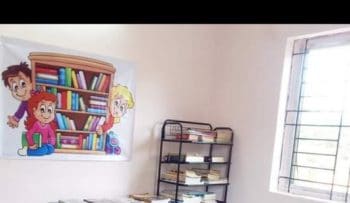Last month, while tidying up my bookshelves, I realized my tiny collection of books were pleading for a little care and attention. My best buddies looked dull, conveying to me they were not well-maintained and looked after.
Books are made of materials that are susceptible to damage after a period of time, hence they need to be preserved and protected. So I gathered a few techniques by which I could take care of my little companions.
1. For me, the design on the book cover is very valuable📚. I like to preserve it in its pristine form. I may have bought the book for various reasons like an attractive title, the reviews, someone recommending it, etc etc., but I instantly develop an attachment with the cover design. It might not be an eye-catching or interesting one, but I still give special emphasis to conserve it.
a) First I cover the book with some paper. b) Then I paste some pictures on it as shown below. c) Finally I cover it up with a plastic sheet.
This saves the book if anything spills on it, and the front cover is well protected from fading.
 2. Some of my bookshelves are close to the window and are exposed to direct sunlight🌄. Since I cannot move them to a different place, I have put some dark-colored thick curtains on the window and covered the rack with a cloth. Direct sunlight can lead to color changes in the books, making the pages turn yellow to brown. It is said that light causes a chemical reaction in the materials used in making the books; the books can turn brittle and frail with this exposure.
2. Some of my bookshelves are close to the window and are exposed to direct sunlight🌄. Since I cannot move them to a different place, I have put some dark-colored thick curtains on the window and covered the rack with a cloth. Direct sunlight can lead to color changes in the books, making the pages turn yellow to brown. It is said that light causes a chemical reaction in the materials used in making the books; the books can turn brittle and frail with this exposure.
3. Some of my storage cupboards are next to walls that are exposed to rains🌧️ on the exterior side, and the room also shares a wall with the washroom, so that creates a lot of dampness in the walls of the room. To prevent the dampness from contracting the cupboard and the books, I have kept some space between the wall and the cupboard. And this has to be periodically checked because excessive moisture facilitates the growth of mold and bookworms which are a threat to the biodegradable nature of the books.
4. Bookworms like silverfish, beetles, termites, cockroaches can severely damage the books. These insects love places that are moist and dirty. Hence, cleaning the bookshelves regularly will help in curbing them. I had placed some naphthalene balls on the shelves, but I was not pleased with the result as I found some cockroaches and insects freely playing on those pieces.
Some other tips
 5. While reading a book, it should not be opened too wide and fully stretched as that will weaken the book spine and the binding of the book.
5. While reading a book, it should not be opened too wide and fully stretched as that will weaken the book spine and the binding of the book.
6. Keep the books in an upright position, with books of the same height together; avoid placing a tall book between short ones, as the book will bend. (For heavy books and those books which I handle every day in my tuition class I lay them flat on the surface).
7. Use bookmarks; don’t fold the pages to note something.
8. Do not use a strong adhesive to stick torn-off pages, as it can further damage the paper.
Now, since you are a book lover, I have a little exercise for you. Pick up your favorite book and gently hold it close to you and tell it, how much you care for this dear friend of yours, and listen to what the book has to say. It will surely tell you something. If not, then you have picked up the wrong book. Try with the next one. Did the next book say something? Noooo…. bad luck. Now, don’t bother and don’t take it seriously. I was kidding.😆😆😆😆
featured image: Paul Stachowiak- Pixabay









Comments & Discussion
39 COMMENTS
Please login to read members' comments and participate in the discussion.